498. Diagonal Traverse

class Solution:
def findDiagonalOrder(self, mat: List[List[int]]) -> List[int]:
n, m = len(mat), len(mat[0])
# 遍历整个matrix, i,j的sum如果是一样的话,就是同一个对角线的,放到同一个map
d = collections.defaultdict(list)
for i in range(n):
for j in range(m):
v = mat[i][j]
d[i+j].append(v)
re = []
for entry in d.items():
# entry:
# (0, [1])
# (1, [2, 4])
# (2, [3, 5, 7])
# (3, [6, 8])
# (4, [9])
if entry[0] % 2 == 0:
re.extend(entry[1][::-1])
else:
re.extend(entry[1])
return re
class Solution:
def findDiagonalOrder(self, mat: List[List[int]]) -> List[int]:
n, m = len(mat), len(mat[0])
re = []
reverse = True
for j in range(m+n-1):
temp = []
for i in range(n): # 一开始i都是从0开始
if j >= m: # 后吗一半matrix,i没法等于0了
j -= 1
continue
cur = mat[i][j]
temp.append(cur)
j -= 1
if j < 0: # j超过范围了就跳出
break
if reverse:
temp = temp[::-1]
reverse = False
else:
reverse = True
re += temp
return re
1769. Minimum Number of Operations to Move All Balls to Each Box
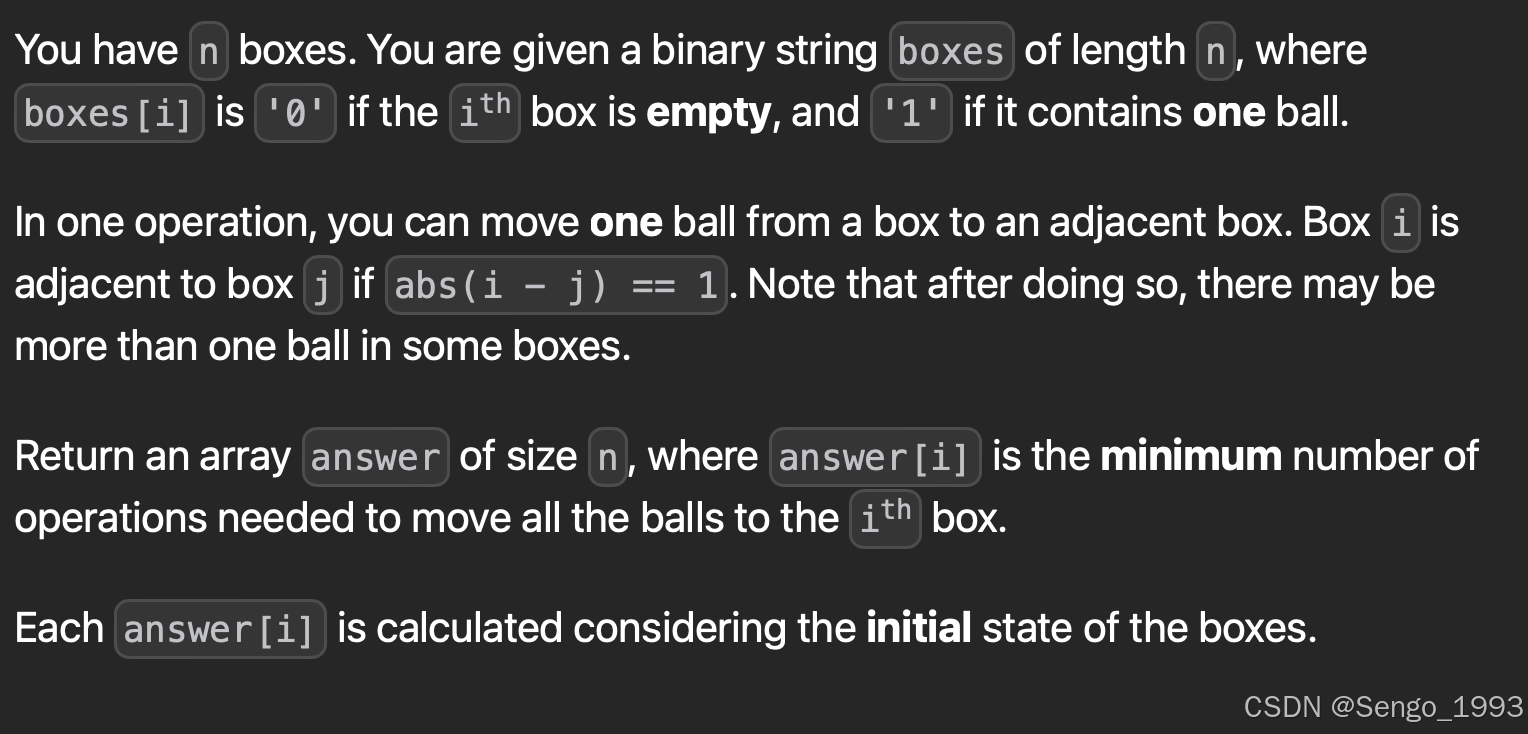
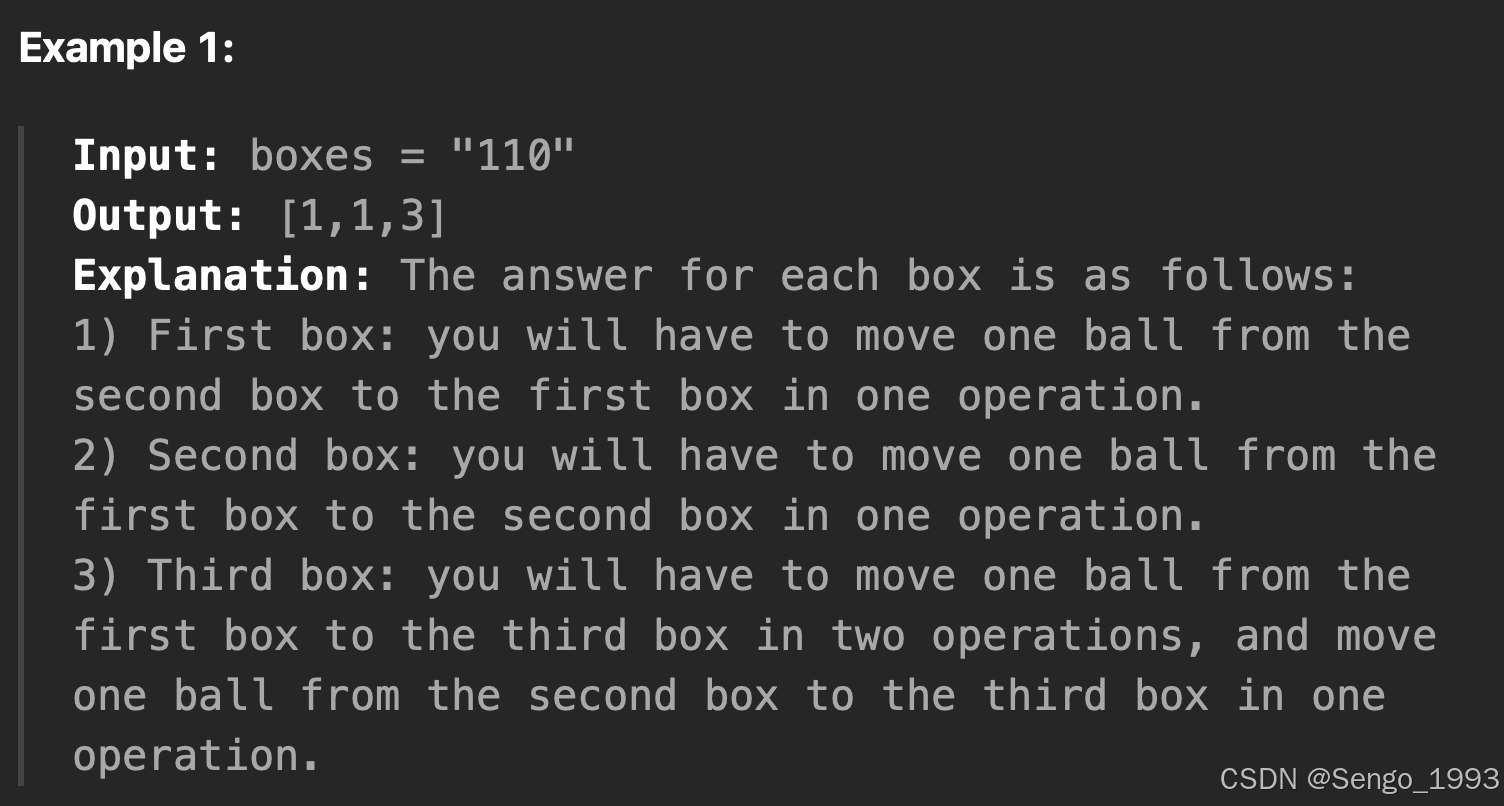
class Solution:
def minOperations(self, s: str) -> List[int]:
n = len(s)
total = 0
left = [0] * n
right = [0] * n
for i, v in enumerate(s):
if i > 0:
left[i] = total + left[i-1]
if v == '1':
total += 1
total = 0
for i, v in enumerate(s[::-1]):
if i > 0:
right[i] = total + right[i-1]
if v == '1':
total += 1
return [left[i]+right[n-1-i] for i in range(n)]
1298. Maximum Candies You Can Get from Boxes

class Solution:
def maxCandies(self, status: List[int], candies: List[int], keys: List[List[int]], containedBoxes: List[List[int]], initialBoxes: List[int]) -> int:
getBox = set(initialBoxes) # all the boxes we get but dont have the keys
getKey = set([]) # all the keys we get but does not have the box
canVisitBox = [] # for the boxes are open or we have the key
re = 0
visited = set()
# find all the box which can be visited (open status)
for i in initialBoxes:
if status[i]:
canVisitBox.append(i)
# loop all the boxes which can be visted
while canVisitBox:
j = canVisitBox.pop(0)
if j in visited:
continue
visited.add(j)
re += candies[j]
#
for box in containedBoxes[j]:
if status[box]:
canVisitBox.append(box)
else:
getBox.add(box)
for key in keys[j]:
getKey.add(key)
# print("getBox", getBox)
# print("getKey", getKey)
# if have box and key
needRemove = []
for i in getBox:
if i in getKey:
canVisitBox.append(i)
needRemove.append(i)
for j in needRemove:
getBox.remove(j)
getKey.remove(j)
# print("canVisitBox", canVisitBox)
return re
1329. Sort the Matrix Diagonally
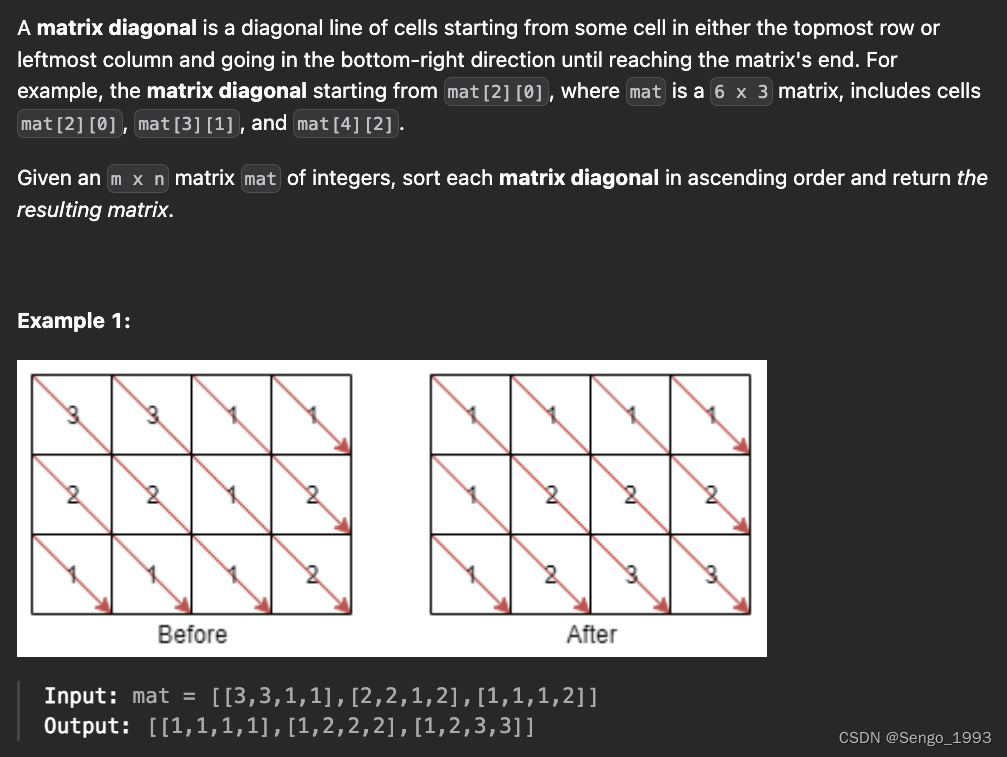
class Solution:
def diagonalSort(self, mat: List[List[int]]) -> List[List[int]]:
# diagnoal share same i-j
# Time O(mn + (m+n)klogk), with k = min(m,n).
# Space O(MN)
n, m = len(mat), len(mat[0])
d = collections.defaultdict(list)
for i in range(n):
for j in range(m):
d[i-j].append(mat[i][j])
for k, v in d.items():
v.sort(reverse=True)
for i in range(n):
for j in range(m):
mat[i][j] = d[i-j].pop()
return mat
777. Swap Adjacent in LR String
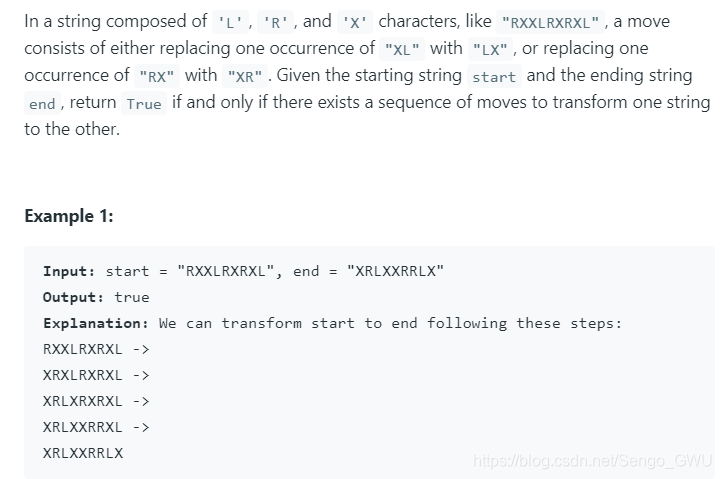
class Solution:
def canTransform(self, start: str, end: str) -> bool:
'''
https://leetcode.com/problems/swap-adjacent-in-lr-string/discuss/217070/Python-using-corresponding-position-
'''
if len(start) != len(end): return False
A = [(s, idx) for idx, s in enumerate(start) if s == 'L' or s == 'R']
B = [(e, idx) for idx, e in enumerate(end) if e == 'L' or e == 'R']
if len(A) != len(B): return False
for (s, i), (e, j) in zip(A, B):
if s != e: return False
if s == 'L':
if i < j:
return False
if s == 'R':
if i > j:
return False
return True
1146. Snapshot Array
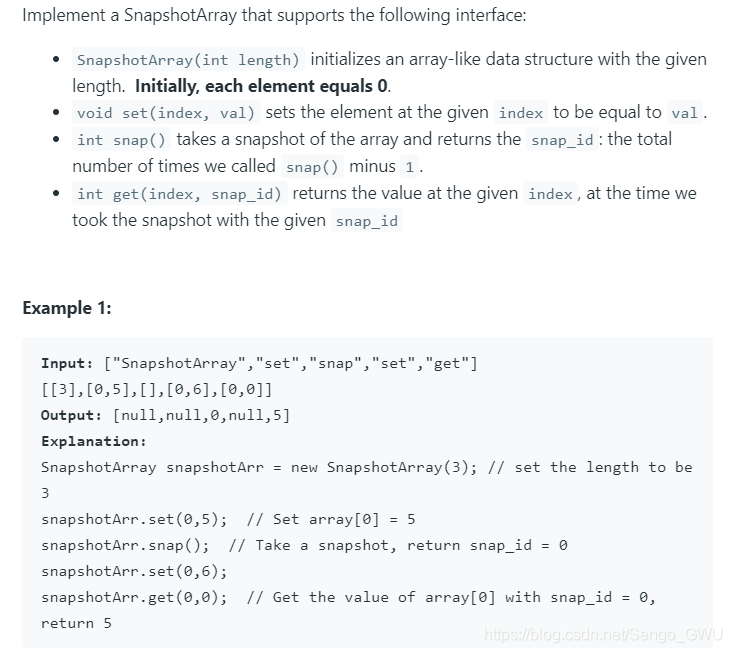
'''
Intuition
Instead of copy the whole array,
we can only record the changes of set.
Explanation
The idea is, the whole array can be large,
and we may take the snap tons of times.
(Like you may always ctrl + S twice)
Instead of record the history of the whole array,
we will record the history of each cell.
And this is the minimum space that we need to record all information.
For each A[i], we will record its history.
With a snap_id and a its value.
When we want to get the value in history, just binary search the time point.
Complexity
Time O(logS)
Space O(S)
where S is the number of set called.
SnapshotArray(int length) is O(N) time
set(int index, int val) is O(1) in Python and O(logSnap) in Java
snap() is O(1)
get(int index, int snap_id) is O(logSnap)
'''
class SnapshotArray(object):
def __init__(self, n):
self.A = [[[-1, 0]] for _ in range(n)] # [self.snap_id, val]
self.snap_id = 0
def set(self, index, val):
self.A[index].append([self.snap_id, val])
def snap(self):
self.snap_id += 1
return self.snap_id - 1
def get(self, index, snap_id):
i = bisect.bisect(self.A[index], [snap_id + 1]) - 1 # 因为搜索的是 [snap_id+1] 比[snap_id+1, val]都小
return self.A[index][i][1]
386. Lexicographical Numbers



class Solution(object):
def lexicalOrder(self, n):
def dfs(num):
if num > n: return
res.append(num)
for i in xrange(10):
if num*10 + i <= n:
dfs(num*10+i)
res = []
for i in xrange(1, 10): # 这里只需要遍历1~9
dfs(i)
return res













 本文提供LeetCode上多个算法题目的解决方案,包括获取盒子中的糖果的最大数量、按对角线排序矩阵、交换字符串中的相邻字符、快照数组及字典序数字等题目,通过Python实现。
本文提供LeetCode上多个算法题目的解决方案,包括获取盒子中的糖果的最大数量、按对角线排序矩阵、交换字符串中的相邻字符、快照数组及字典序数字等题目,通过Python实现。





















 1709
1709

 被折叠的 条评论
为什么被折叠?
被折叠的 条评论
为什么被折叠?








